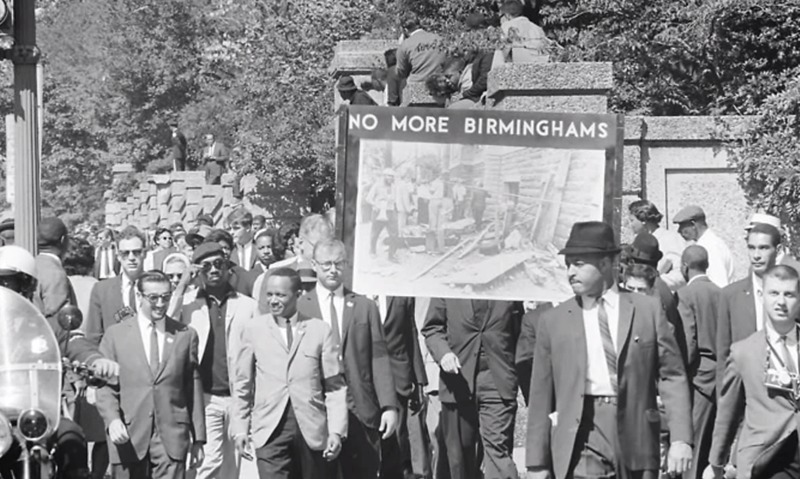In 1963, Rev. James Bevel, along with several other key organizers, orchestrated a movement in Birmingham, AL known as the “Birmingham Children’s Crusade,” unique in that it featured children as the primary participants. As the policing worsened and protesters were jailed for increasingly longer amounts of time, the movement was significantly weakened by those apprehensive to take to the streets, afraid to lose their jobs and homes. The Birmingham Children’s Crusade provided the solution: a population even greater in size, with more energy and optimism, and with no one worried about maintaining a job or keeping food on the table. As hundreds of children were literally blown away by water hoses with double the normal water pressure, attacked by police dogs, and stuffed into overcrowded jail cells, the brutality of the movement set off a nationwide chain of protests and movements, including the March on Washington. The tipping point occurred on September 15th, 1963 when an explosion tore through the 16th Street Baptist Church, killing four young girls and critically injuring another one. The image above highlights national sentiments after the bombing. In the image, several protesters, led by a police escort, march with a sign that says “No More Birminghams” and displays a picture of the destruction caused by the church bombing. The bombing, as we can see in the image, served as the ultimate rallying point nationwide that change was not just critical but that the lives and future of the youth depended on it.
The prominence of the poster and its caption shed light on a critical aspect of the Birmingham Children’s Crusade, one that is fundamental to why the movement had such a great impact: as children, their vulnerability amplified the severity of any violence toward them. To see a child undergo retaliation with a high-pressure water hose was difficult, to say the least. It is this aspect that Bevel highlights in his interview for the PBS television documentary, “Eyes on the Prize.” He notes that the involvement of children added a sense of honor and nobility to the movement: “It was like the parents pretty much agreed that, and most parents even when it's dangerous and risky, they have a deep sense of appreciation and respect for young people when they're doing what's right. I mean, all of them knew it was potentially dangerous, but they knew it was honorable, and they knew it was noble and they knew it was right. So they didn't fight against it” (10). However, as Black children, this innocence was often replaced with a view of them as dehumanized and, thus, unable to experience pain. The trope of black children as not fully human has historically manifested itself through a character known as the “pickaninny.” As Robin Bernstein argues, this character was a “subhuman Black juvenile who was typically depicted outdoors, merrily accepting (or inviting) violence” (34). With such a representation of Black children in their minds (and hearts), one can easily imagine why Birmingham police officers may have deemed it appropriate to combat the non-violent presence of hundreds of children with batons and German shepherds.
